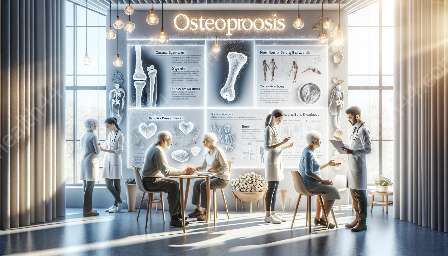Osteoporosis is a common health condition characterized by weakened bone density and an increased risk of fractures. While lifestyle factors and aging play significant roles in the development of osteoporosis, genetics also exert a strong influence. Understanding the interconnection between genetics and osteoporosis is crucial for identifying individuals at risk and developing targeted prevention and treatment strategies.
The Genetic Basis of Osteoporosis
Genetics plays a key role in determining an individual's peak bone mass and their susceptibility to bone-related conditions, including osteoporosis. The heritability of bone mineral density (BMD), a critical factor in assessing osteoporosis risk, has been extensively studied, with estimates indicating that genetic factors contribute to as much as 60-80% of the variance in BMD.
Several genes have been implicated in influencing BMD and bone metabolism. For example, variations in the genes encoding for proteins involved in bone formation, such as collagen type I alpha 1 (COLIA1) and osteocalcin, have been linked to differences in BMD and fracture risk. Additionally, genes related to vitamin D and calcium metabolism, including the vitamin D receptor (VDR) gene, play a crucial role in modulating bone health.
Genetic Polymorphisms and Osteoporosis Risk
Genetic polymorphisms, variations in the DNA sequence that can affect gene function, have been extensively studied for their association with osteoporosis risk. Certain polymorphisms in genes involved in bone remodeling, estrogen metabolism, and other pathways have been implicated in altering the susceptibility to osteoporosis.
For instance, polymorphisms in the estrogen receptor alpha (ESR1) gene, which is involved in mediating the effects of estrogen on bone tissue, have been associated with BMD and fracture risk in postmenopausal women. Similarly, polymorphisms in the osteoprotegerin (OPG) gene, a key regulator of bone resorption, have been linked to variations in BMD and the likelihood of osteoporotic fractures.
Gene-Environment Interactions
While genetic factors significantly contribute to osteoporosis risk, their effects are often modulated by environmental and lifestyle factors. Gene-environment interactions play a crucial role in determining an individual's susceptibility to osteoporosis and can provide valuable insights into personalized prevention and treatment approaches.
For example, studies have demonstrated that the impact of genetic variants associated with BMD can be influenced by factors like physical activity, nutrition, and exposure to certain medications. Understanding these interactions can aid in identifying individuals who may benefit the most from interventions targeting modifiable environmental factors.
Implications for Personalized Osteoporosis Management
Insights into the genetic underpinnings of osteoporosis have significant implications for personalized disease management. Genetic testing and profiling can offer valuable information about an individual's genetic predisposition to osteoporosis, facilitating targeted risk assessment and enabling the development of personalized prevention and treatment strategies.
Furthermore, genetic markers associated with osteoporosis risk can aid in identifying individuals who may benefit from early interventions, such as lifestyle modifications, nutritional supplements, or specific medications. By integrating genetic information into clinical decision-making, healthcare professionals can optimize osteoporosis management and improve patient outcomes.
Conclusion
Genetics plays a crucial role in shaping an individual's risk of developing osteoporosis and experiencing related fractures. By unraveling the genetic basis of osteoporosis, researchers and healthcare professionals can gain valuable insights into the mechanisms underlying this prevalent health condition. Understanding the interplay between genetics and osteoporosis holds promise for the development of personalized interventions that effectively mitigate the impact of osteoporosis on bone health.


